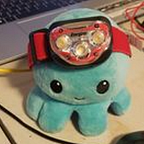A fair coin is flipped n times and the results recorded.
How many different sequences of heads and tails are possible?
The mathematics of a fair coin flip
When a fair coin is flipped, there are two possible outcomes for each flip: Heads (H) or Tails (T). If the coin is flipped n times, each flip is independent of the others, meaning the outcome of one flip does not affect the outcomes of any other flips.
To determine the number of different sequences of heads and tails possible for n flips, you need to consider that each flip can result in one of two outcomes. Thus, for each flip, there are 2 possibilities.
For n flips, the total number of sequences is given by multiplying the number of outcomes per flip across all flips:
This is because for each flip, you double the number of possible sequences (e.g., if you know all the sequences for 3 flips, adding a 4th flip doubles this number since each existing sequence can be extended by either a Head or a Tail).
Hence, the number of different sequences of heads and tails when a fair coin is flipped n times is 2^n.
If you haven’t joined Medium but would love to, click here. By signing up for Medium through my referral link, I will receive a small commission.
